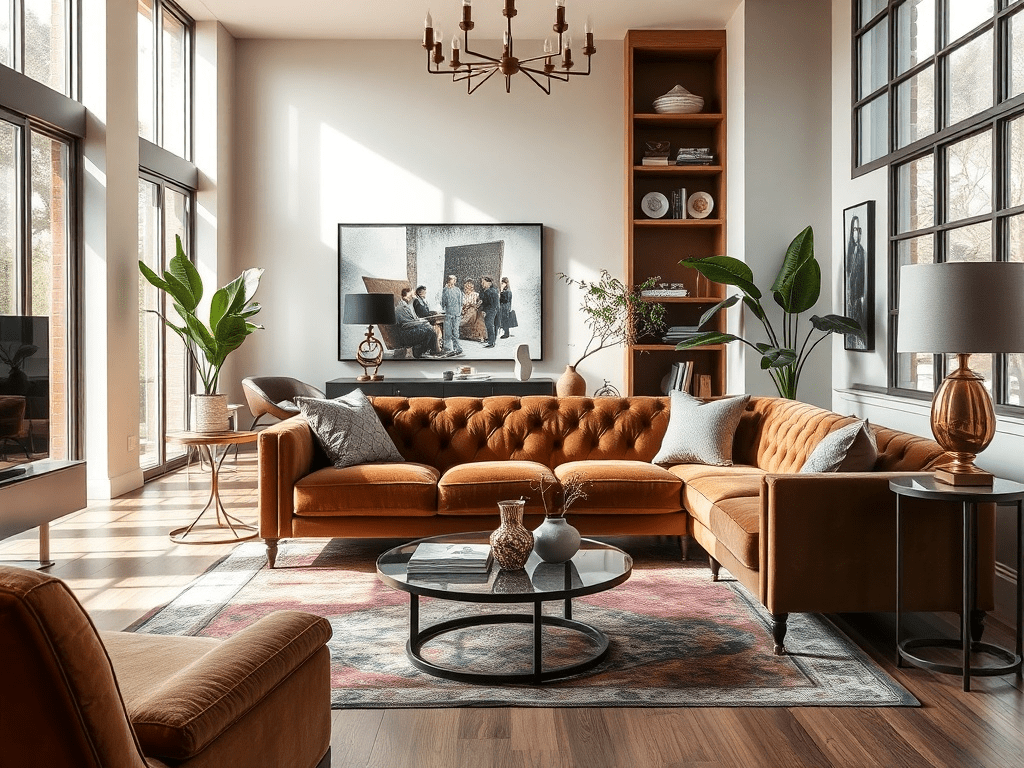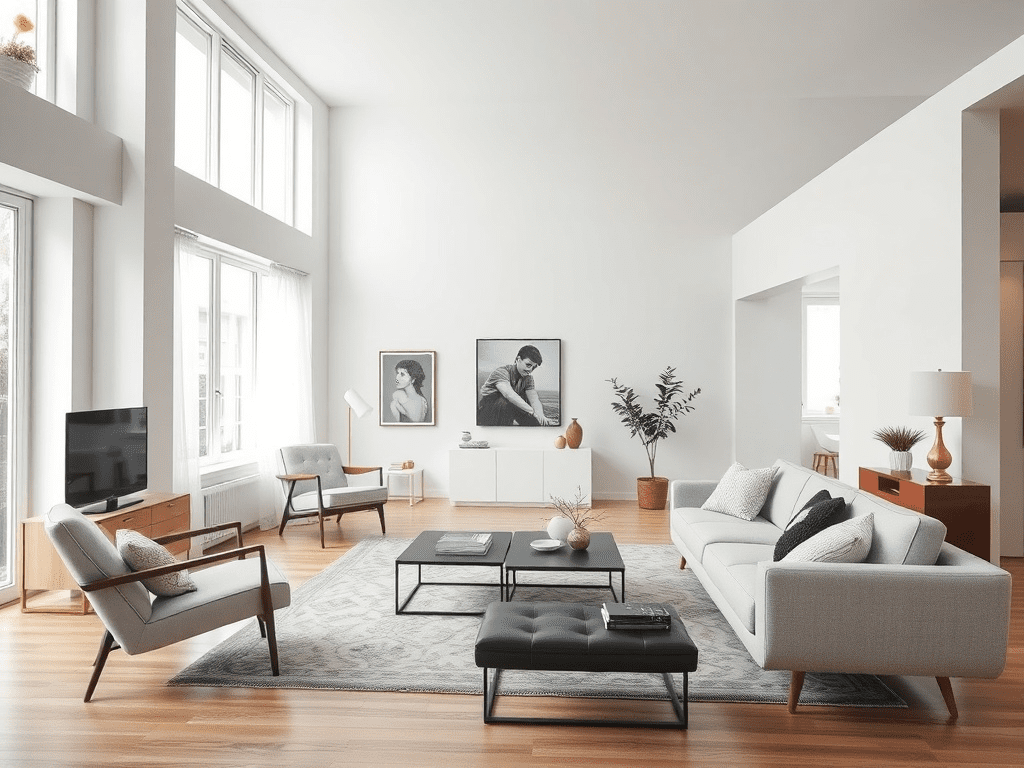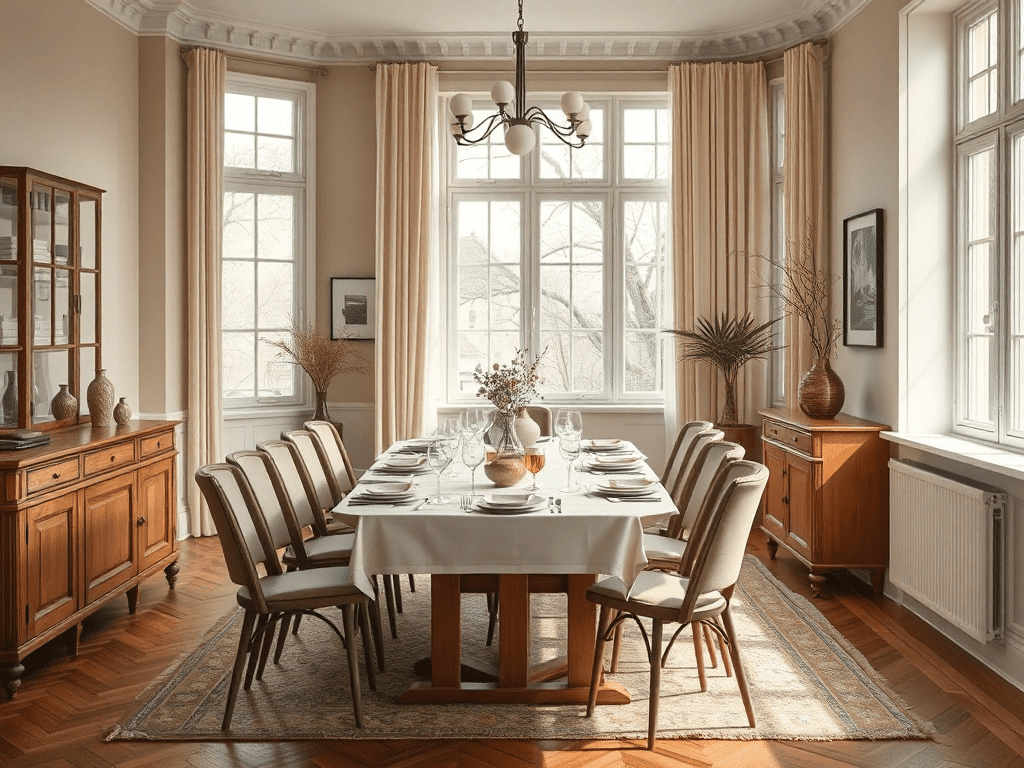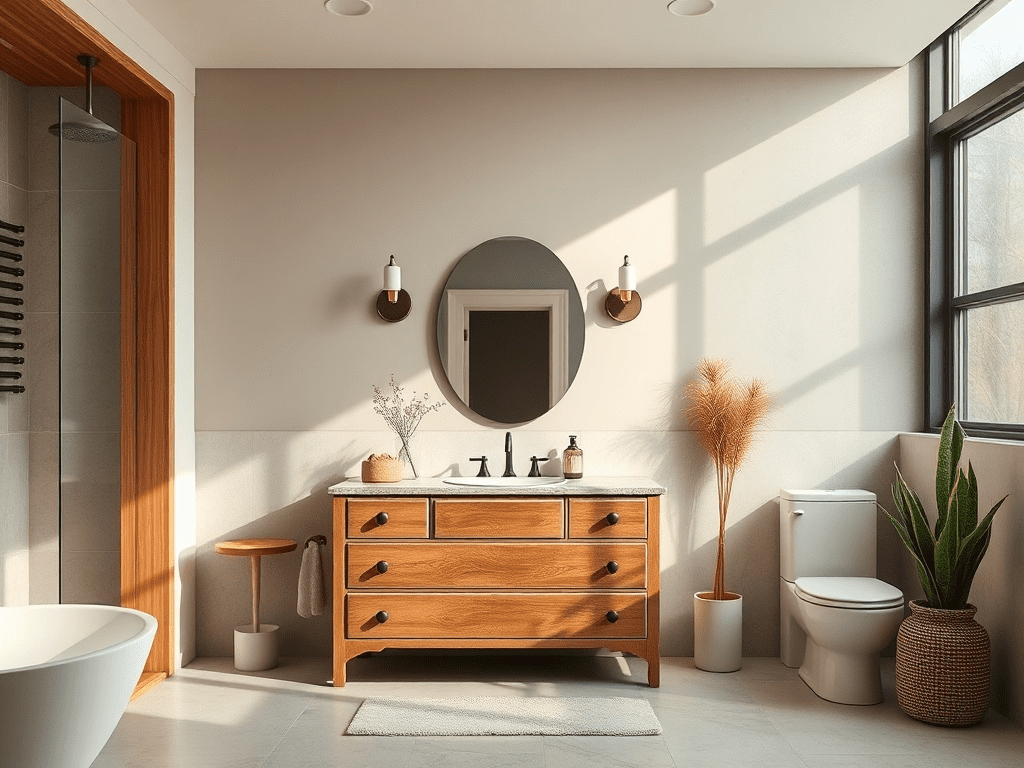Discover the art of designing around vintage furniture, blending timeless elegance with modern sensibilities. It’s about more than just placing old pieces in a room; it’s about curating a space that tells a story, balancing the charm of the past with the comforts of the present. Let’s explore how to master the art of designing around vintage furniture, creating spaces that are both stylish and personal.

How Do I Start Designing Around Vintage Furniture?
The journey begins with understanding your existing space and identifying the vintage pieces you want to feature. Consider the scale, style, and condition of each item. Start with a focal point, such as a vintage sofa or dining table, and build your design around it. Think about the room’s overall purpose and how the vintage piece can enhance its functionality and aesthetic.
What Colors Go Well With Vintage Furniture When Designing a Room?
Color plays a crucial role in harmonizing vintage and modern elements. Neutral walls provide a versatile backdrop, allowing the vintage furniture to stand out. Consider using warm whites, soft grays, or muted greens. For a bolder look, explore complementary colors that enhance the tones of your vintage pieces. For example, a vintage wooden desk pairs beautifully with a deep blue accent wall. Don’t be afraid to experiment with different shades and textures to create depth and visual interest.
Mixing Vintage Furniture with Modern Design
The key to successfully mixing vintage and modern furniture is balance. Juxtapose the ornate details of vintage pieces with the clean lines of modern designs. A vintage armchair can be paired with a contemporary floor lamp, or a vintage dresser can be styled with modern accessories. The goal is to create a cohesive look that feels both timeless and current. According to interior design experts, this contrast creates visual interest and prevents the space from feeling dated or too sterile.

Designing Around Vintage Furniture Living Room
In the living room, a vintage sofa or coffee table can serve as a statement piece. Pair it with modern seating and a minimalist rug for a balanced look. Incorporate vintage accessories, such as lamps, mirrors, and artwork, to add character and charm. Remember to consider the scale of the furniture and the layout of the room to ensure a comfortable and functional space. Use throw pillows and blankets to tie in color and texture.
Designing Around Vintage Furniture Bedroom Ideas
In the bedroom, a vintage headboard or dresser can create a romantic and inviting atmosphere. Pair it with modern bedding and lighting for a comfortable and stylish retreat. Consider using soft, muted colors to create a calming effect. Incorporate vintage accessories, such as mirrors, artwork, and lamps, to add personality and charm. Ensure that the furniture fits the scale of the room and doesn’t overcrowd the space.
Decorating Around a Vintage Dining Table
A vintage dining table is a great way to add character to your dining room. Pair it with modern chairs for a stylish contrast. Consider using a vintage chandelier or pendant light to create a focal point. Incorporate vintage accessories, such as candlesticks, vases, and artwork, to add personality and charm. Make sure the table is the right size for the room and can comfortably accommodate your guests.

Vintage Furniture Design Style Guide
Understanding different vintage furniture styles can help you create a cohesive and authentic look. Mid-century modern, Art Deco, and Victorian are just a few of the popular styles to consider. Research the characteristics of each style and choose pieces that complement your personal taste and the overall aesthetic of your home.
Tips for Designing Around Antique Furniture
Antique furniture requires special care and attention. When designing around antique pieces, consider their age, condition, and historical significance. Protect them from direct sunlight, moisture, and extreme temperatures. Use appropriate cleaning products and avoid harsh chemicals. Display them in a way that showcases their beauty and craftsmanship.
What Kind of Rugs Work Best When Designing Around Vintage Furniture?
Rugs can tie the whole room together. Here’s a guide to choosing the best ones:
| Rug Style | Description | Why it Works |
|---|---|---|
| Oriental Rugs | Rich patterns, often with deep reds, blues, and golds. | Complements the ornate details of many vintage pieces. |
| Geometric Rugs | Modern patterns with clean lines and simple shapes. | Provides a contrast to the curves and details of vintage furniture. |
| Neutral Rugs | Solid colors or subtle patterns in beige, gray, or cream. | Allows the vintage furniture to be the star of the show. |
FAQ: Designing Around Vintage Furniture
What are the key considerations when designing around vintage furniture?
Key considerations include the scale of the furniture, the overall style of the room, and the condition of the vintage pieces. It’s important to balance vintage elements with modern pieces to create a cohesive look. Also, knowing how to mix antique and modern furniture is key to success.
How do I blend vintage furniture with modern design elements?
Blending vintage and modern elements involves creating a balance between the two styles. Use contrasting colors, textures, and shapes to create visual interest. Pair vintage pieces with modern accessories, and vice versa. Consider using a neutral color palette to tie everything together.
What are some tips for choosing the right vintage pieces for my space?
When choosing vintage pieces, consider the size of your space, your personal style, and the overall aesthetic of your home. Look for pieces that are in good condition and that complement your existing furniture. Don’t be afraid to mix and match different styles, but make sure everything feels cohesive.
How can I create a cohesive look when designing around vintage furniture?
Creating a cohesive look involves using a consistent color palette, incorporating similar textures and patterns, and maintaining a sense of balance. Consider the overall style of your home and choose vintage pieces that complement that style. Accessorize with items that tie everything together.
How do I care for and maintain vintage furniture to ensure longevity?
Caring for vintage furniture involves protecting it from direct sunlight, moisture, and extreme temperatures. Use appropriate cleaning products and avoid harsh chemicals. Polish wood furniture regularly and condition leather furniture to prevent cracking. Consider having antique pieces professionally restored to ensure their longevity. According to Bob Vila’s guide to cleaning antique furniture, gentle cleaning is key.
What are the best color palettes to complement vintage furniture?
The best color palettes to complement vintage furniture depend on the style of the furniture and the overall aesthetic of the room. Neutral colors, such as white, gray, and beige, provide a versatile backdrop for vintage pieces. Warm colors, such as gold, red, and orange, can enhance the richness of vintage furniture. Cool colors, such as blue, green, and purple, can create a calming and sophisticated atmosphere.

How can I repurpose vintage furniture in a creative and functional way?
Repurposing vintage furniture is a great way to add character and charm to your home. A vintage dresser can be turned into a bathroom vanity, a vintage trunk can be used as a coffee table, or a vintage door can be repurposed as a headboard. Get creative and think outside the box to find new uses for your vintage pieces. Get some ideas at Country Living Magazine!


